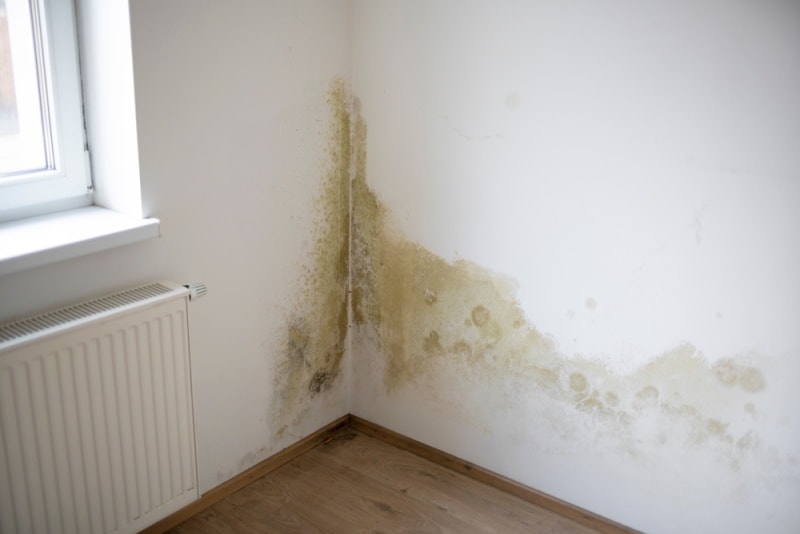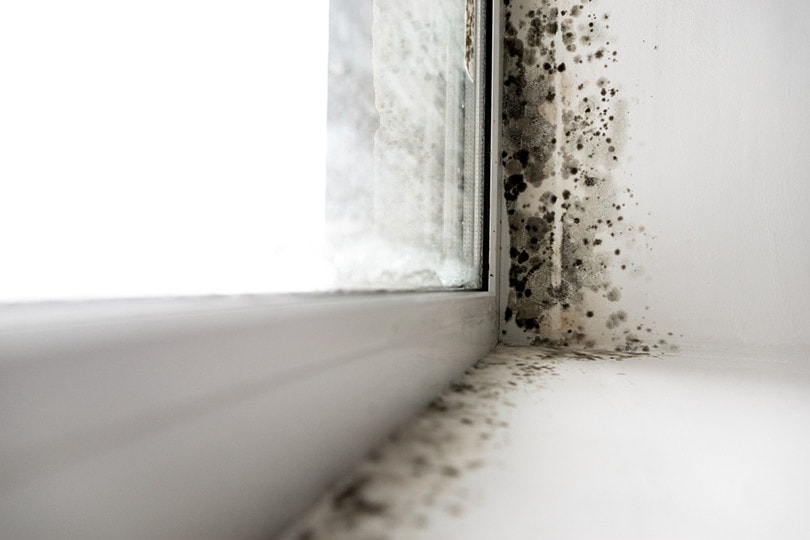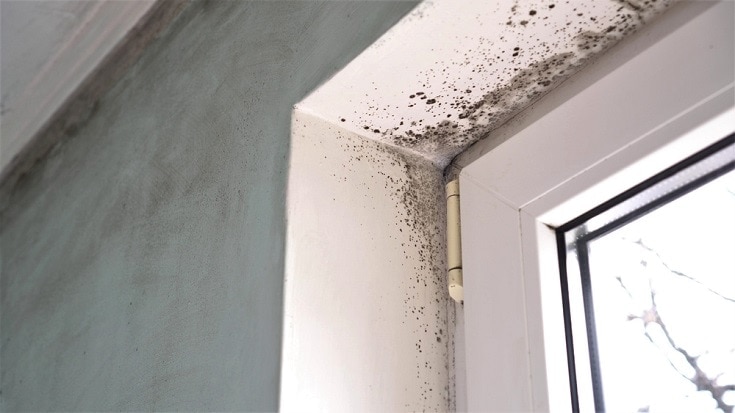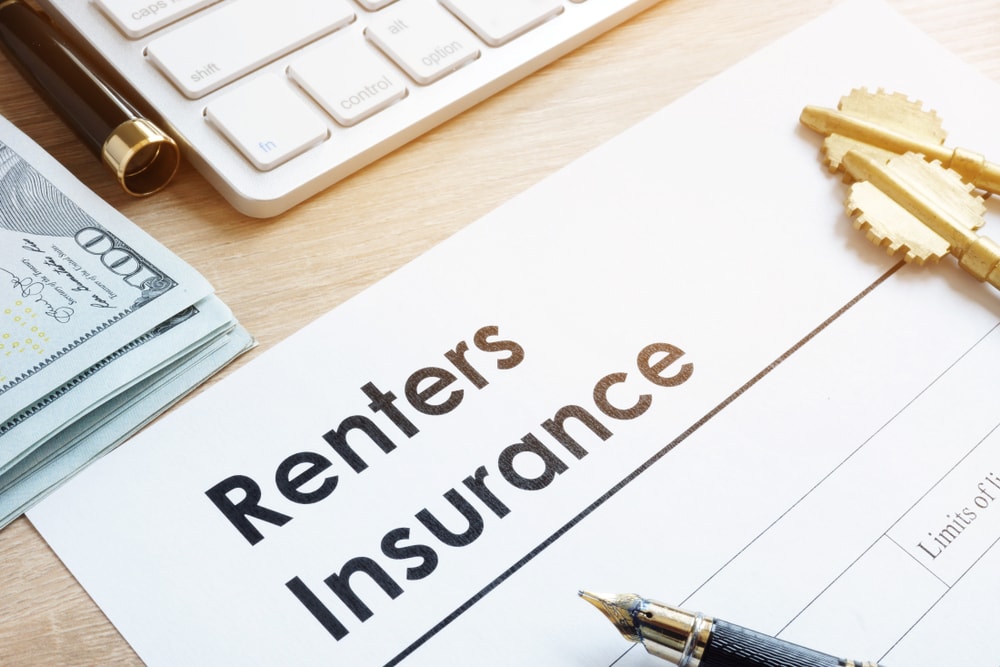Does Renters Insurance Cover Mold? Important Info!
-
Pete Ortiz
- Last updated:

Renters have critical support available when a hazardous mold problem makes itself known. Landlords can often help protect their investment, and your insurance provider may even step in to cover the cost of damage.
Renters insurance will cover mold resulting from particular events in your policy. Understanding the boundaries of your coverage is crucial at the first sight of mold, as unseen damage may demand thousands of dollars in remediation. We’ll discuss whether renters insurance covers mold damage and how you can avoid footing a hefty repair bill.
Does Renters Insurance Cover Mold?
Renters insurance does not always cover mold damage. You will need an endorsement for mold, fungi, and bacteria in many cases. Your renters insurance may include it automatically, especially if you have an all-risk policy, but you mustn’t assume it does. The additional coverage typically has a limited maximum reimbursement of up to $5,000.

Covered Perils
Renters insurance with mold coverage will only offer assistance if it stems from a covered peril.
- Accidental overflow or steam discharge from appliances or fixtures
- Burst, frozen, or leaky pipes
- Weight of snow, ice, or sleet
- Leaking A/C system
- Wind or hail damage
- Vandalism
If the cause of the mold is sudden and internal, your insurance will often step in to offer assistance. Renters insurance doesn’t protect against negligence or intentional water damage that leads to mold growth. It also won’t cover mold damage from a flood, groundwater seepage, or sewer line backups.
If you’re concerned about flooding, you can get up to $100,000 in flood insurance from the National Flood Insurance Program. Sewer and drain backup riders are also available, often for only $5 a month or less. As with your standard renters insurance policy, these riders may not automatically cover mold damage.
What to Do If You Have Mold Damage
Finding mold in the home doesn’t necessarily entail an insurance claim. Renters insurance only covers your personal belongings. If you discover mold growing in the corner of the wall, you’ll want to let your landlord know initially, as they are responsible for the structure. Always take pictures of mold damage, and note any text or phone conversations regarding the problem.
After identifying and documenting mold development, taking immediate action to lessen and slow the damage is crucial. Fix the cause of the moisture, dry the room, and clean the mold as well as you can. Insurers will cover damage on anything affected before you can stop the spread, so you gain nothing from waiting.

Tenant vs. Landlord Obligations
Your landlord must supply safe and livable housing, and keeping it mold-free can be an essential obligation. If they don’t maintain the property, respond to damage, and fix leaks, your state’s laws could allow you to withhold rent or sue for damages should mold harm your health.
Tenants can also be liable for mold under several circumstances. Maintaining a high indoor humidity, having unsanitary and messy habits, or negligently leaving standing water make it the renter’s responsibility to manage and pay for remedying any resultant growth. No matter who is at fault, a cooperative approach will ensure a more positive relationship between landlord and tenant and expedite a resolution.
How to File a Renters Insurance Claim for Mold
If mold growth from a covered peril damages your personal property and contents, contact your renters insurance provider as soon as possible.
- Pictures of the mold damage before cleaning or repair
- Receipts and documentation for items with mold damage
- Handwritten list and statement of the mold damage
Keep critical information for a follow-up, such as the claim number, your agent’s name, and expected response times. Carefully check the extent of your renters insurance plan. There may be a cap on the coverage for mold damage, but you could also qualify for extra benefits, such as assistance with additional living expenses if your home becomes unlivable.

How to Prevent Mold Growth
If the mold growth isn’t your fault, you shouldn’t have any issue holding your landlord or insurance company responsible for handling the damage. Part of ensuring a successful claim is staying vigilant and quick to respond to mold, while the other involves maintaining a low-moisture and mold-free space.
- Maintain a relative humidity of 30–50%
- Use dehumidifiers in moisture-rich environments, such as basements
- Vacuum and dust frequently
- Replace your air conditioning filters regularly, and ensure proper maintenance
- Use a hygrometer to monitor humidity levels
- Clean up spills and water damage immediately
Mold spores can spread to nearby units if you’re in an apartment building. Maintaining a clean space will protect you from negatively affecting your neighbors or being held liable for further damage.
Looking for home RENTERS insurance?

Lemonade offers some of the best insurance plans you can find on the market today!
Final Thoughts
Mold remediation is costly, but you can’t avoid it if you want to continue living in your rental. Open lines of financial assistance are crucial for many renters in these situations. When you rent and care for the property responsibly and maintain quality renter’s insurance, you’ll always have a fallback to get critical help when you notice the first signs of mold in your home.
Featured Image Credit: epixproductions, Shutterstock
Contents


